‘Batman Begins’ is a superhero film directed by one of the most celebrated directors of the 21st century, Christopher Nolan. The film is a seminal work of storytelling and is regarded as one of the best superhero origin stories ever told in cinema. It stars Christian Bale as Bruce Wayne/Batman along with Michael Caine, Liam Neeson, Katie Holmes, Gary Oldman, Cillian Murphy, and Morgan Freeman in the lead roles.
The film follows Bruce Wayne’s transformation into Batman, a masked crime-fighter and vigilante who strives to save his home, Gotham City, from criminals, crime lords, and a sinister secret society known as the League of Shadows, hell-bent on destroying Gotham. The film keeps the titular hero at the forefront and deals with many underlying themes such as childhood trauma, corruption, law and order, and justice. The implications of these themes can be a little overwhelming and raise questions about the ending of this film. Here’s everything you need to know about the ending of ‘Batman Begins.’ SPOILERS AHEAD.
Batman Begins Plot Synopsis
A young Bruce Wayne, who suffers from a fear of bats, attends an opera performance with his parents, Thomas and Martha Wayne. During the performance, Bruce is frightened by actors dressed as bats and asks his parents to leave. Outside the theatre, a mugger named Joe Chill shoots Bruce’s parents in front of his own eyes which traumatizes him. Subsequently, he is raised by the family’s loyal butler, Alfred.
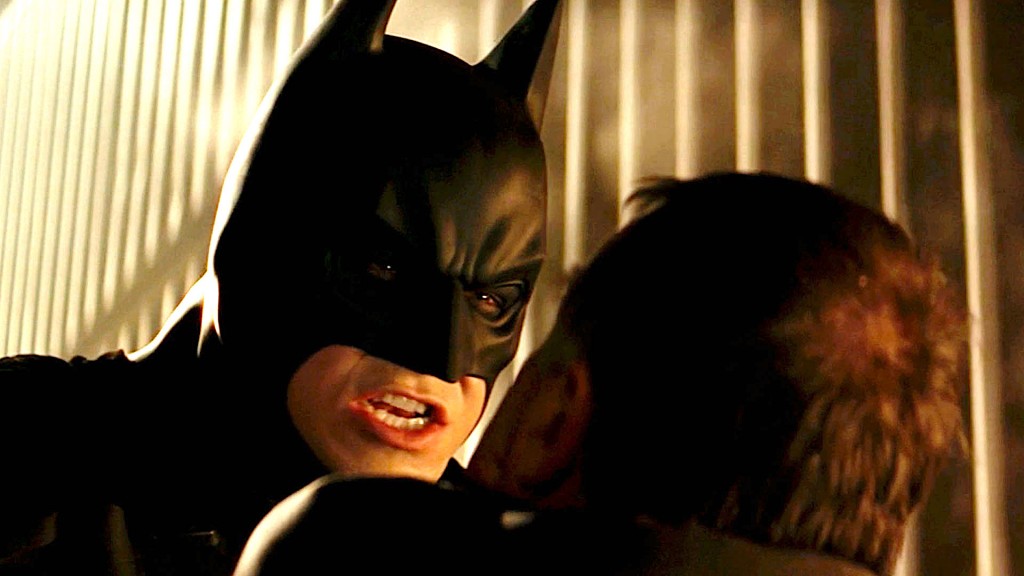
Fourteen years later, Joe Chill is granted parole in exchange for testifying against mafia leader Carmine Falcone. Bruce is embittered by this and decides to murder Chill as justice for his parents’ murder, but one of Falcone’s men kills Chill before Bruce can get to him. Bruce’s childhood friend Rachel, a law student, scolds him for trying to take the law into his own hands and pursuing revenge in the name of justice. After a confrontation with Falcone, Bruce is inspired to become a symbol of fear to eradicate crime from Gotham.
Bruce spends the next several years traveling and training himself in martial arts. He is approached by Henri Ducard and joins the League of Shadows, a group of mysterious ninja assassins led by Ra’s al Ghul. After completing his training with the League under the tutelage of Ducard, Bruce learns that the League plans to destroy Gotham City, believing it to be corrupt and beyond saving. Bruce refuses to act as an executioner as per the League’s demand and burns down their temple before absconding. Ra’s is killed, but Bruce saves Ducard.
After returning to his home in Gotham, Bruce, with help from his father’s friend and Wayne Enterprises’ archivist, Lucius Fox, creates the identity of “Batman.“ Bruce is determined to save Gotham, which is overrun with criminal activities by instilling fear in the criminals’ hearts. Soon, Bruce comes across the nefarious Dr. Crane/Scarecrow and learns of his connection to the League’s plot to destroy Gotham. How Batman manages to save Gotham from destruction and becomes a symbol of hope and justice in the city forms the remainder of the story.
Batman Begins Ending: Does Batman Kill Ra’s al Ghul?
Towards the end of the film, Bruce learns from Ducard that the League of Shadows plans to destroy Gotham by mixing Scarecrow’s fear toxin in the city’s water supply and then vaporizing it. Vaporizing the water will make the toxin airborne and will kill all Gotham inhabitants. Ducard then reveals himself as the real Ra’s al Ghul and burns down the Wayne Manor.
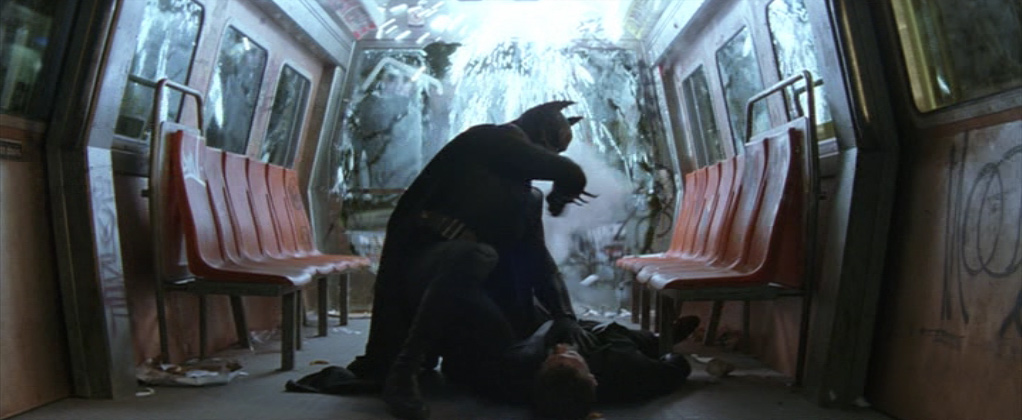
He then proceeds to execute his plan using the monorail. Bruce, as Batman, instructs Gordon to use the Tumbler to destroy a portion of the monorail’s tracks. Batman tries to stop Ra’s aboard the monorail, but he jams the train’s control system. The pupil and his former master engage in a duel as Gordon destroys the tracks, causing the train to head into a crash. Bruce defeats Ra’s and escapes the train, mere seconds before it crashes and kills Ra’s.
So does that mean Batman killed Ra’s? Not really. Earlier in the film, Bruce understands the distinction between justice and execution after a conversation with Rachel. When the League demands Bruce to become an executioner, he rejects. Ducard explains that killing is a necessary evil in the road to justice. Bruce sights not killing as a way to differentiate himself from those committing crimes and injustice. Therefore, he adopts a strict no-killing rule while fighting crime as Batman.
The ending altercation with Ra’s tests his resolve about not killing. On the surface, it seems like Batman left Ra’s to die, thereby killing him and breaking his rule. Batman states that he won’t kill Ra’s but doesn’t have to save him either, technically still keeping his rule intact. It seems like Batman gets away this time on a technicality, but there’s another layer to this scene.
Ra’s (as Ducard) tells Bruce earlier in the film that by not killing his enemies, he shows compassion towards them, and they may not extend the same compassion towards him. Batman’s action to not save Ra’s shows that he is prepared to do what is necessary to save his city. By choosing not to save Ra’s, he proves that he doesn’t hold any compassion towards his enemies and that Ra’s fate is his own making. Batman neither impacts nor interferes with his fate; he merely does what is necessary – stops Ra’s from destroying Gotham.
How Does Batman Affect Bruce and Gotham City?
Bruce creates the identity of Batman to fight crime and corruption in Gotham City. He intends for Batman to be a symbol of fear amongst criminals. Bruce suffers from a fear of bats which he developed during childhood. He is also traumatized by the murder of his parents. The identity of Batman helps Bruce deal with both these aspects of his life. Firstly, by choosing to base his persona on bats, he proves that he has overcome his fear and uses it as his strength.
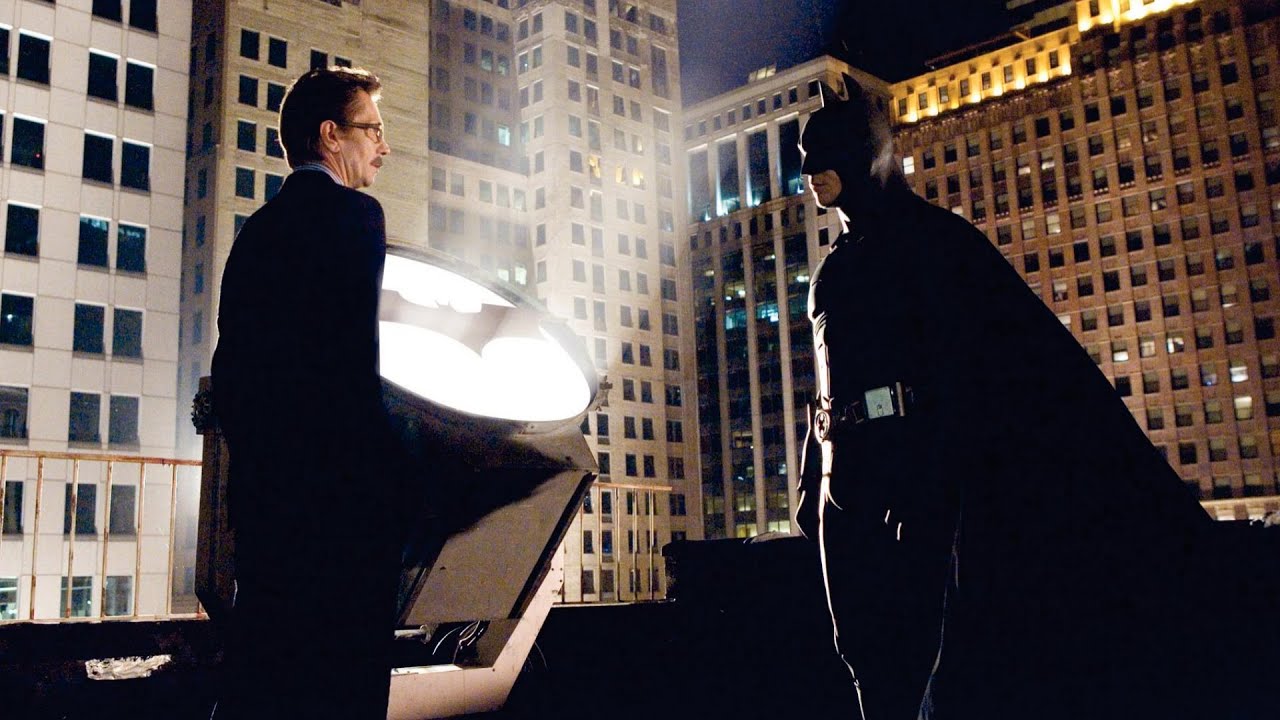
By donning the Bat-suit, he makes sure that his childhood fear is now the symbol of the fear that resides in the minds and hearts of all the city’s wrong-doers. At the end of the film, Batman’s heroics establish him as a protector and savior of Gotham. The Bat, which is a symbol of fear amongst criminals, becomes a symbol of hope and justice amongst Gotham’s citizens. The last scene in which Gordon shines the newly installed Bat-signal in the night sky serves as a visual representation of this idea.
Secondly, on some level, Bruce holds himself responsible for the death of his parents and struggles to deal with his past. Bruce altogether shies away from his family business early on in the film. He also says to Alfred that he’d tear down the Wayne Manor, his family’s ancestral home, brick by brick if he gets to have his way.
Towards the end of the film, Bruce, as Batman, allows the monorail built by his father to crash. Bruce also decides to rebuild the Wayne Manor after it is burned down by Ra’s and takes an active interest in his family business by purchasing a controlling stake in the company. All these scenes stand to prove that Bruce is ready to move on with his past, and the identity of Batman has provided some catharsis to Bruce.
Lastly, the identity of Batman creates complications between Bruce and Rachel early on in the film as he has to hide his secret identity. At the end of the film, Rachel does admit her feelings for Bruce. However, she states that being Batman has changed Bruce, and she cannot be with him as long as Gotham continues to need Batman. The identity of Batman stands between Bruce’s happiness.
Still, he realizes that the city needs Batman now more than ever as Crane has freed many inmates from Arkham, who are yet to be re-captured. Batman’s disposal of organized crime in Gotham has also created a power vacuum in the city, which certain criminals could look to exploit. Batman’s impact on Bruce and Gotham is intricately linked together. Still, this interconnection’s true extent won’t be realized until the next film in the franchise, which brings us to that obvious sequel tease in the final scene.
What is the Significance of the Joker Card?
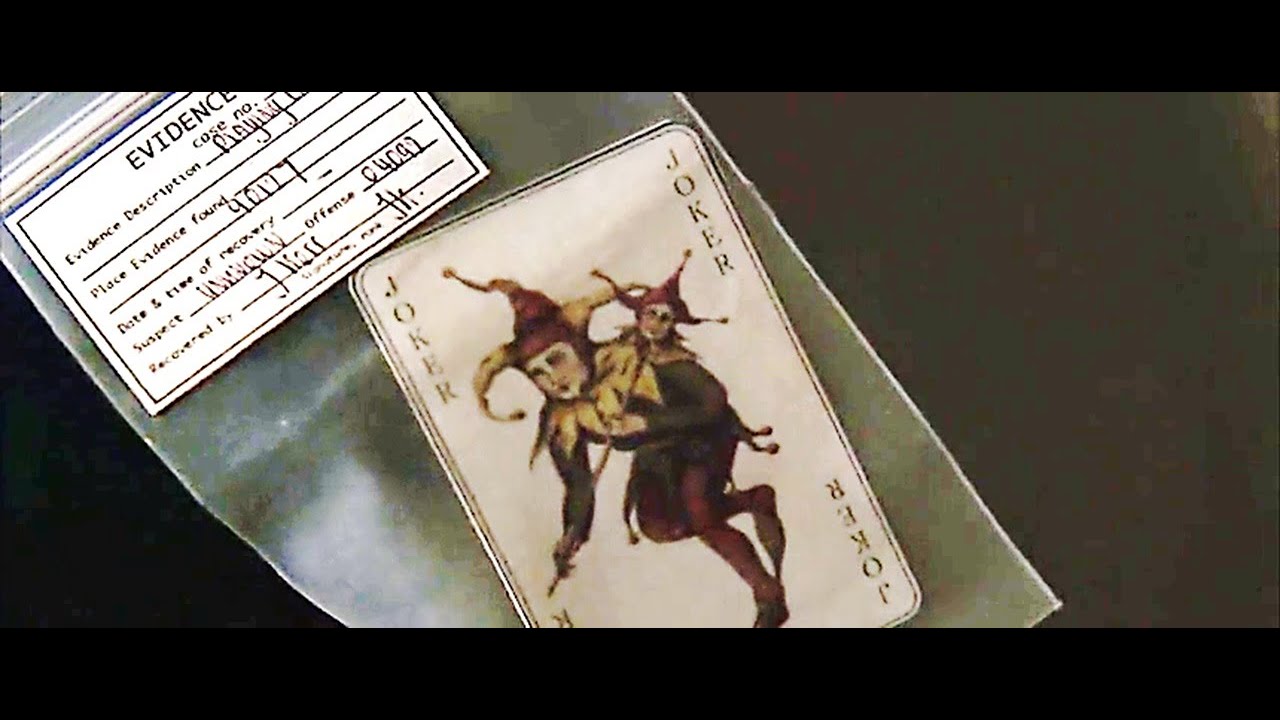
In the last scene before Batman glides away into the Gotham night sky, we see Jim Gordon raise concerns over a particular new criminal wreaking havoc in Gotham. The criminal leaves behind a call-sign in the form of a playing card. Gordon hands Batman the card, which turns out to be a joker card. Long-time Batman fans will recognize the card as a subtle hint about this mysterious criminal’s identity who has an affinity for theatrics. This criminal is none other than the clown prince of crime and Batman’s arch-enemy, the Joker. The final scene sets the stage for an epic confrontation between Batman, a force of law and order, and the Joker, a force of chaos and anarchy. Alas, that’s a story for another day.
Read More: Where Was Batman Begins Filmed?

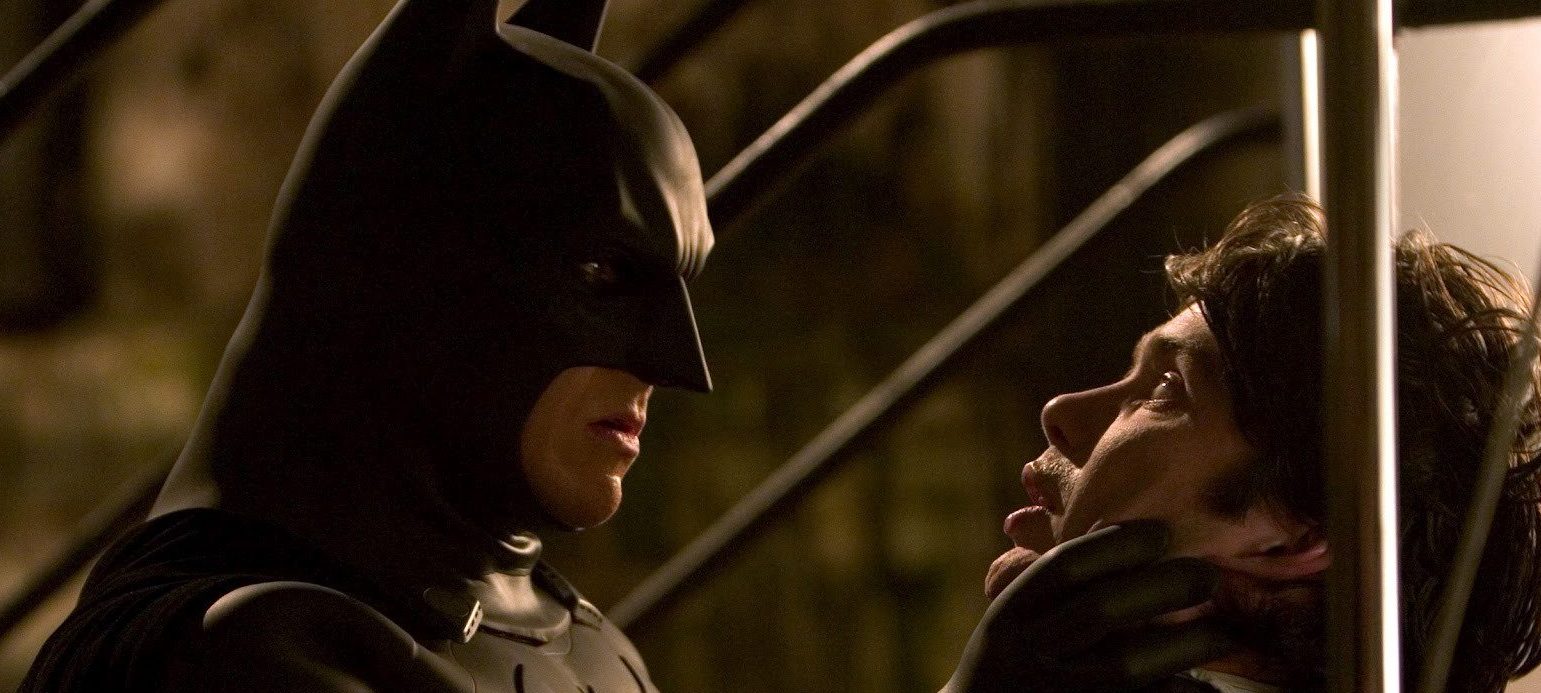
You must be logged in to post a comment.